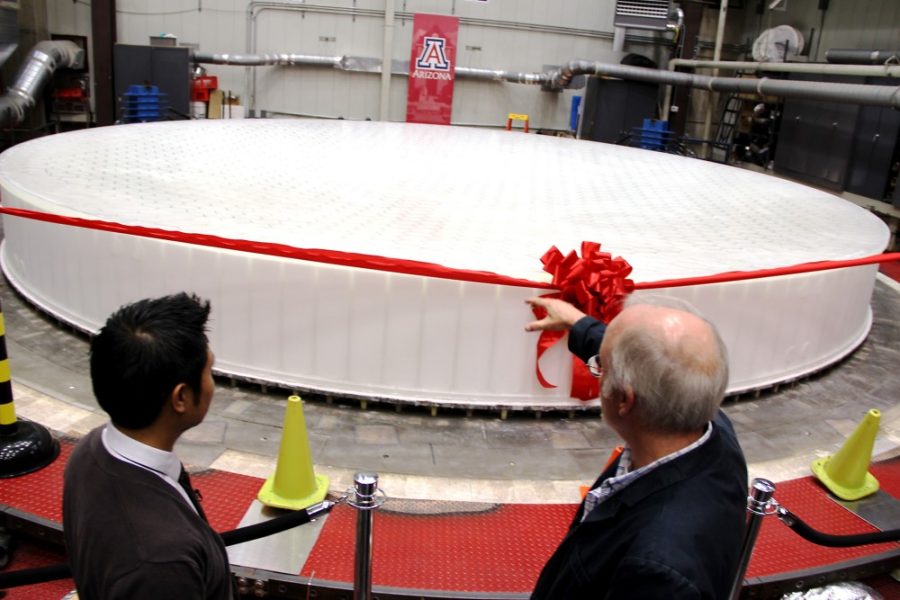Astronomers are one step closer to gaining a deeper understanding of the universe as UA scientists recently unveiled the third of seven mirrors for the Giant Magellan Telescope.
The Steward Observatory Mirror Lab unveiled the mirror on Friday. The mirror will eventually become part of a seven-mirror array, constructed in the Atacama desert in Chile.
The GMT is expected to be one of the largest telescopes in the world. It will be used to study many different aspects of the universe, including planets in our own galaxy, the structures of other galaxies and the physics behind black holes, said Patrick McCarthy, project director for the GMT.
“The most important thing about a telescope is really how much light it collects, so we do that with the large mirrors,” McCarthy said. “These mirrors are the largest in the world.”
Made from 20 tons of pure borosilicate glass imported from Japan, GMT mirror number three was cast in August and has spent three months in a massive furnace that rotates, giving the surface of the mirror its concave shape, said John Hill, a casting scientist for the mirror lab.
The newly cast reflector is 27 feet in diameter and features a unique honeycomb design on its underside.
“We make [the mirrors] honeycombs because a thing this big is really thick and heavy if it’s made out of solid glass,” Hill said, adding that the design also adds rigid strength to the mirror.
Another advantage of the honeycomb design is that it allows for air to circulate through the voids so the mirror’s temperature more closely matches that of the night air, which leads to sharper images.
UA President Ann Weaver Hart participated in the ribbon cutting and spoke at the event.
“I wanted to emphasize to our local, national and international partners how critically important I think the mirror lab and the Giant Magellan Telescope are to the future of space sciences, engineering optics and [many other] cutting edge sciences,” Hart said at the event.
Along with the economic boost that the research and development of such a technology brings to the community and the state, Hart said, the university’s partnership with the GMT project will serve to enhance the UA’s burgeoning reputation as a hotbed for astronomy.
“This is the only place in the world where you can have a mirror built like this,” Hart said. “When we finish this project, we will guarantee our number one position in the space sciences for 50 years to come. It’s remarkable for the U of A.”
– Follow Mark Armao @MarkArmao









